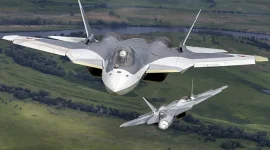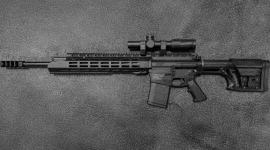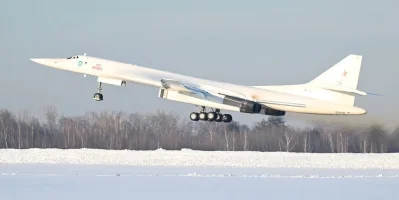- Views: 4K
- Replies: 21
In a major strategic move, Russia has formally offered India a two-pronged aviation package featuring its premier Su-57E stealth fighter and the advanced Su-35M combat jet.
The proposal, aimed at bolstering the Indian Air Force's (IAF) depleted squadron numbers and providing a fifth-generation fighter solution, includes an unprecedented offer of full technology transfer for local manufacturing.
The comprehensive deal was reportedly put forward by Russia’s state-owned defence conglomerate Rostec.
It pitches the Su-57E, Russia's most advanced stealth fighter, for licensed production by India's Hindustan Aeronautics Limited (HAL).
Simultaneously, it offers the Su-35M as a direct-supply option to meet the IAF’s urgent requirement for 114 new jets under the ongoing Multi-Role Fighter Aircraft (MRFA) tender.
This proposal seeks to solidify Russia's position as India's primary defence partner amid intense global competition.
The Fifth-Generation 'Make in India' Proposal
The centrepiece of the Russian offer is the plan for domestic production of the Su-57E.The proposal suggests that HAL's Nashik facility, which has extensive experience from producing over 220 Su-30MKI aircraft, could become the hub for manufacturing the fifth-generation fighter.
Russia has offered complete Transfer of Technology (ToT), including crucial source codes, which would allow India to integrate its own indigenous weapons and systems.
This high degree of localization—projected at 40-60%—aligns with New Delhi's "Aatmanirbhar Bharat" policy.
It would enable the IAF to equip the Su-57E with Indian-made systems such as the Astra beyond-visual-range missile, the Rudram anti-radiation missile, and the domestically developed Virupaksha AESA radar.
Analysts suggest that technology gained from the Su-57 project could also provide significant benefits to India's own futuristic Advanced Medium Combat Aircraft (AMCA) program.
An Immediate Boost with the Su-35M
To address the IAF’s immediate operational gaps—currently at 31 squadrons against a sanctioned strength of 42—Russia is offering the 4.5-generation Su-35M jet for rapid delivery.Rostec officials claim the Su-35M shares up to 80% of its core technology with the IAF's existing Su-30MKI fleet. This high degree of commonality would simplify maintenance, reduce training time for pilots and ground crews, and allow for the use of shared infrastructure, ensuring a smoother and faster integration into the air force.
Russia has stated that its production lines for the Su-35 have been significantly ramped up due to ongoing military operations, promising that it could deliver enough jets for two full squadrons to India within two to three years of a signed contract.
Advanced Engine Technology on Offer
A key technological aspect of the proposal involves advanced jet engines. Both the Su-57E and Su-35M are powered by the Saturn AL-41F1S engine, which provides exceptional thrust and supermaneuverability.However, Russia is also offering its next-generation engine, the Izdeliye 177S. This engine is designed with serrated nozzles and other features that reduce its heat and radar signature, enhancing the aircraft's stealth capabilities.
Crucially, the Izdeliye 177S boasts a service life of 6,000 hours, a threefold increase over the Su-30MKI's current AL-31FP engines, and is designed to be a direct replacement.
This would allow the IAF to upgrade its entire fleet of over 250 Su-30MKIs, extending their service life and improving their combat performance.
Russia has indicated it is waiting for a commitment from an international partner, such as India, to begin flight-testing the new engine.
Challenges and Geopolitical Considerations
Despite the attractive terms, the Indian government faces several challenges in evaluating the Russian offer.The IAF has reportedly shown a preference for the French Rafale fighter, which has already been integrated into its force structure.
Furthermore, some Western defence analysts have raised questions about the Su-57's stealth characteristics when compared to American aircraft like the F-35.
A significant hurdle is the risk of geopolitical fallout, particularly potential U.S. sanctions under the Countering America's Adversaries Through Sanctions Act (CAATSA), which casts a shadow over major defence deals with Russia.
India also has long-standing concerns regarding the reliability of spare parts and maintenance support from Russia, an issue that has previously impacted the operational availability of the Su-30MKI fleet.
New Delhi must now carefully weigh the economic and industrial benefits of this proposal against these strategic and geopolitical risks.




